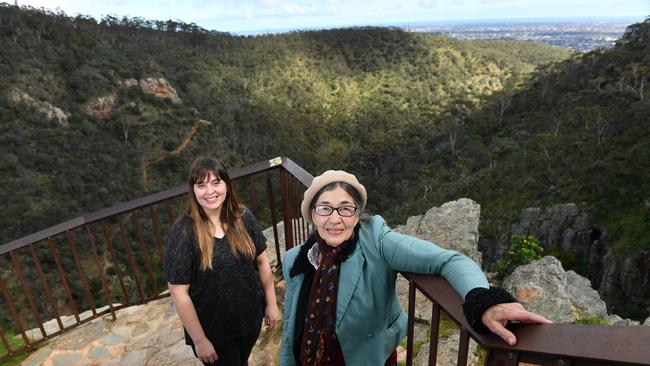Invasive species hitching ride on hikers’ boots into Morialta Conservation Park
Bushwalkers, climbers and nature enthusiasts could be loving one of Adelaide’s best loved conservation parks to death with a rapidly spreading threat surprising researchers.

SA News
Don't miss out on the headlines from SA News. Followed categories will be added to My News.
- Builder signs up for historic last touch on hi-tech hub
- Latest subscriber-exclusive giveaways, specials and prizes
Bushwalkers, rock climbers and nature enthusiasts who frequent Morialta Conservation Park may be loving it to death by spreading invasive species.
UniSA researchers, who completed the 533-hectare park’s most comprehensive vegetation survey in 16 years, want to ensure the native plants, including ten endangered species, are better protected into the future.
Lead author Jacynta Anderson was surprised to find European olive trees “rapidly spreading in the park”
“The fact that olive groves had not been previously reported to occupy large areas of the park is surprising,” she said.
“Especially because three of the plots surveyed were dominated by olives forming dense cover, and at least two of these plots appeared to be former plantations with olive trees more or less equally spaced.”
Dense olive stands prevent the regeneration of native plant species and reduce the diversity of leaf-litter insects.
Olive trees were the most widespread and abundant invasive woody species among almost 300 introduced plant species recorded in the survey. There were 486 native plant species representing about a third of the 1500 plant species found within the Adelaide and Mount Lofty Ranges.
Miss Anderson believes increasing numbers of visitors are unconsciously cultivating the growth of invasive species by spreading seeds and diseases via their boots or clothing.
“We need more boot scrubbing stations in the park, particularly in areas where there is high foot traffic, to remove mud, soil, fungal and plant material and stop seeds from spreading to new areas,” she said.
Disinfecting boots before entering and leaving the park could be an option, as well as avoiding wearing clothes or footwear that capture seeds.
Research supervisor and co-author, ecologist Joan Gibbs said they set out to perform the first systematic scientific survey of the entire park, using 10sq m survey plots at 48 locations. But the concerns for park management soon emerged.
A Department for Environment and Water spokeswoman said the National Parks and Wildlife Service SA works closely with Friends of Parks members and the community to regularly carry out weed control work in high priority areas of Morialta Conservation Park.
“Efforts are focused on areas with high conservation values including areas with threatened species and in largely undisturbed areas of the park, rather than areas that have been highly modified or significantly impacted by a heavy weed load,” she said.
Suggestions about new locations for boot cleaning stations, traditionally used to manage risks of the fungal disease phytopthora, will be considered in the context of recommendations from a current review.
The research paper “High diversity of native plants and vegetation types in the Morialta Conservation Park and the threat of invasive species” is published in the journal Transactions of the Royal Society of South Australia.

